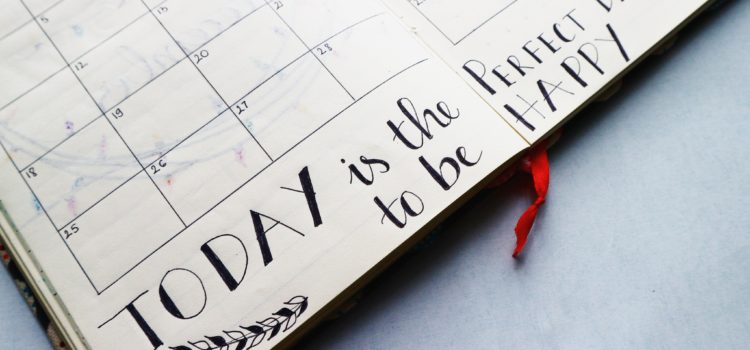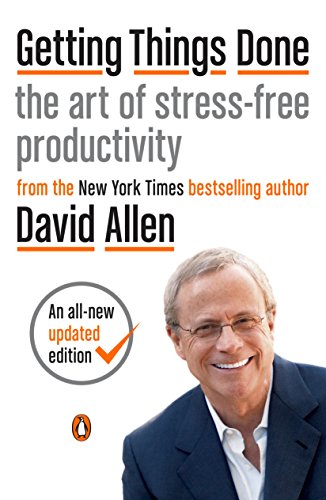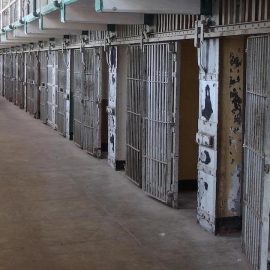

This article is an excerpt from the Shortform summary of "Getting Things Done" by David Allen. Shortform has the world's best summaries of books you should be reading.
Like this article? Sign up for a free trial here .
What’s the best way to maintain your calendar, and how can the GTD calendar system help?
A GTD calendar is a little different than your standard organizational calendar—for good reason. The GTD calendar also involves other tools and tricks to stay organized.
A GTD Calendar: Getting the Right Tools
In the Getting Things Done system, you need to make sure you have the right tools. Your GTD calendar is one of the most important. Here’s why.
You need a handful of supplies in your workspace to make this system go.
In addition to whatever you choose to use for capturing, organizing, and maintaining your lists (such as planners, notebooks, a computer, tablet, and/or phone), you’ll need:
- Calendar for tracking date-specific actions and reminders (you can keep using whatever calendar you currently use; once you start using the GTD system you’ll get a better sense of whether you need a different type of calendar)
- File folders for organizing projects and general reference materials
- Automatic labeler for file folders
- Paper-holding trays for your in-tray, out-tray, work-in-progress tray, and/or read-and-review tray
- Pen or pencil
- For organizing and filing papers:
- Paper clips
- Rubber bands
- Scotch tape
- Stapler
- Sticky notes
- Plain paper or notepad for capturing and making lists
- Trash or recycling bin to keep your space (and mind) clear of unnecessary items
You may or may not also want to use some kind of organizer, whether it’s a planner, notebook, phone app, or some combination. If you’re already using something and it’s working for you, incorporate it into this system.
The GTD program isn’t rigid; tailor it in a way that will get you to use the system.
Your GTD Calendar
Among the actionable items that take longer than two minutes and that you can’t delegate, there will be some that are time-sensitive and others that just need to get done as soon as possible. You can keep track of actions on your Getting Things Done calendar.
Use your GTD calendar to track all time-sensitive tasks and information, including:
- Actions that are time-specific, such as appointments
- Actions that are day-specific, such as deadlines
- Information that is day-specific, such as directions for an appointment or short-term reminders like “call Suzie when she gets back from vacation”
The only items that should go on your Getting Things Done calendar are things that must happen on that day or not at all.
That means no more daily to-do lists; you’ll have a Next Actions list instead, which we’ll talk about next. Daily lists are ineffective for two reasons:
- Through the course of the day, you’re likely to get new information and new task assignments that require you to constantly add to and reconfigure your to-do list. Then, not only are you probably ending each day with a discouraging list of things you didn’t get done, but you also have to spend time copying those things over into a new list for the following day.
- It’s easy to add things that are aspirational rather than absolutely necessary, so your to-do list gets bogged down with extra tasks and you lose sight of what absolutely has to happen today. Better to have the calendar strictly show things that must happen that day and supplement with a short list of things you’d like to do if you have time.
Projects List
Next, go through your Pending pile and find the items labeled “Projects list.” Your Projects list is purely an index of your projects—it shouldn’t include the plans or details for any of your projects. Those kinds of details will be on your GTD calendar, Next Actions list, and files of project support materials.
Keeping your Projects list complete, current, and straightforward has several benefits:
- You can easily scan and review it (during your Weekly Review) to make sure that you’ve defined next actions and haven’t forgotten about any projects in progress.
- You get a quick snapshot of your total workload, in case you need to reassess any of your commitments.
- You can feel focused and in control, knowing that you’re tracking everything in progress and nothing is slipping through the cracks.
- You’re less likely to underestimate and neglect seemingly simpler projects, such as enrolling your child in preschool.
How to Identify Hidden Projects
Despite the exhaustive capturing process, there may still be projects that you haven’t recognized or added to your Projects list. You may find unrecognized projects in these three places:
1) Current activities: Look through your workspace, Getting Things Done calendar, and next actions to find pieces of projects. For example, maybe you have a meeting on your GTD calendar about an upcoming presentation, but the presentation itself isn’t on your Projects list. Or maybe you have a note to call Susan about a fundraiser on your Calls to Make list (covered in the Next Actions section), but planning the fundraiser isn’t on your Projects list.
2) Higher-horizon goals and interests: Take stock of your longer-term goals and interests and you’ll find projects such as learning a professional skill or planning for retirement.
3) Problems and opportunities: Problems, improvements, and opportunities all present the opportunity to create projects that resolve the issues or capitalize on the opportunities. First, reaching a solution to any problem is most likely a multi-step project. This can include addressing an issue with your landlord to resolving a dispute with your business partner.
Second, you may notice inefficiencies or frustrations in your workflow—whether for storage, record keeping, keeping in touch with people, or filing—that could or needs to be improved. You can create projects that reconfigure your workflow and ultimately improve your life.
Third, put things that you’ve thought about doing or want to try on your Projects list, such as learning photography or Italian cooking. You can initially put these on your Someday/Maybe list, but as you use the GTD system more and get a better grasp on your life, shift some of those someday projects into current projects.
With your GTD calendar, you’ll be able to plan ahead with efficiency. The GTD calendar can help you become a more organized person.

———End of Preview———
Like what you just read? Read the rest of the world's best summary of David Allen's "Getting Things Done" at Shortform .
Here's what you'll find in our full Getting Things Done summary :
- Why you're disorganized and your to-do list is a mess
- The simple workflow you can do everyday to be more productive than ever
- How to take complicated projects and simplify them






